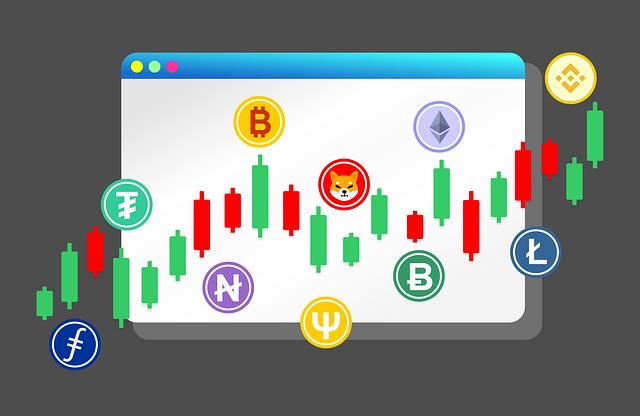Best Free Crypto Signals Website 2025 Guide
Author: Jameson Richman Expert
Published On: 2025-11-08
Prepared by Jameson Richman and our team of experts with over a decade of experience in cryptocurrency and digital asset analysis. Learn more about us.
Free crypto signals website options are everywhere in 2025, but choosing a reliable source that fits your trading style is crucial. This guide explains what crypto signals are, how free services work, how to evaluate providers, practical workflows for using signals safely, and the tools and exchanges that help you turn signals into measured trades. Use the actionable checklists, backtesting tips, and reputable resources below to spot high-quality signals and avoid scams.

Why free crypto signals websites are so popular in 2025
Crypto adoption and retail trading continued growing into 2025. Lower fees, more derivatives products, and social trading made it easy for newcomers to enter markets — and that created demand for ready-made trade ideas. Free crypto signals websites and groups (Telegram, Discord, Reddit and web-based dashboards) promise convenience: they send buy/sell entries, stop-losses, and take-profit levels so non-expert traders can act quickly.
However, higher availability means more noise and potential for manipulation. A reliable approach combines signals with your risk controls and due diligence — this guide helps you do that methodically. For context on long-term market forecasts and sentiment, see this 2025–2030 Bitcoin analysis and Reddit predictions for perspective on macro drivers: 2025 forecast — Bitcoin through 2030.
What are crypto signals?
Crypto signals are structured trade recommendations created by analysts, algorithmic systems, or community contributors. A typical signal includes:
- Entry price (or entry range)
- Stop-loss (risk control level)
- Take-profit targets (one or several)
- Timeframe (scalp, intraday, swing, long-term)
- Rationale or indicators used (e.g., moving averages, RSI, volume)
Signals can be generated by manual traders using technical analysis, by bots using automated strategies, or by market data services using order-flow and on-chain signals. For background on cryptocurrencies and the basic technology behind price moves, consult the authoritative overview on Wikipedia — Cryptocurrency. For technical analysis methods referenced by most signal providers, see Wikipedia — Technical analysis.
Types of crypto signals and how they work
Understanding the signal type helps you choose matching risk sizing and tools.
1. Technical-trend signals
Based on indicators (moving averages, MACD, RSI), chart patterns (breakouts, reversals), or candlestick formations. Usually targeted to traders who read charts and prefer discretionary confirmation.
2. Momentum and breakout signals
These aim to catch rapid price moves when price breaks key levels. They often require quick execution and precise stop-loss placement.
3. Arbitrage and triangular signals
Rare in free services, these exploit price differences across exchanges. They require access to multiple exchanges and fast execution.
4. On-chain and fundamental signals
Derived from blockchain metrics (whale movement, exchange inflows/outflows) or news events. Useful for swing and positional traders who consider macro drivers.
5. Order-flow and liquidity signals
Some advanced providers analyze order book data to detect unusual liquidity or spoofing; understanding market makers and liquidity provides context here — see What is a Market Maker — roles & risks.

Benefits and drawbacks of free crypto signals
Free signals are attractive, but weigh their pros and cons:
- Pros: Low cost, great for beginners, exposure to professional ideas, large communities for learning.
- Cons: Quality varies widely, lack of accountability, potential for manipulation (pump-and-dump), limited customer support and often no verified track record.
How to evaluate a free crypto signals website — checklist
Use this checklist before acting on any free signal:
- Transparency: Does the provider publish audited or verifiable performance metrics? Avoid services that only show cherry-picked wins.
- Signal format: Clear entries, stops and targets. Vague signals are lower-quality.
- Track record & verification: Look for independent verification (e.g., Myfxbook for forex analogues) or public trade records with timestamps.
- Community engagement: Active discussions and educational content indicate a provider that teaches, not just broadcasts.
- Signal frequency & timeframe: Does it match your availability and risk tolerance? High-frequency scalp signals need fast execution.
- Risk-management emphasis: Do they recommend position sizing and stop-losses?
- Reputation & reviews: Check multiple sources — forums, Reddit threads, and independent reviews.
- Legal disclaimers & terms: Legit providers include disclaimers and compliance info; scams often omit terms.
For broader context on choosing reliable crypto apps (for example when you need to buy and fund accounts), this practical guide to buying crypto in Canada explains fees and security and can help you pick exchanges with good liquidity: Top apps to buy crypto in Canada — fees & security.
Red flags and scams to avoid
Be on guard for these warning signs:
- Guaranteed returns or “risk-free” claims.
- Unverifiable or edited screenshots as proof.
- Paywalls that insist on large upfront payments for “VIP signals.”
- Push to move money to unknown wallets or OTC deals.
- High-pressure messaging (FOMO tactics, limited-time join invites).
- Pump-and-dump group behavior where many members are encouraged to buy simultaneously and creators sell into the pump.
If in doubt, don’t follow a signal blindly. Cross-check with price action and your own indicators.

How to use a free crypto signals website safely — step-by-step workflow
Below is a practical, repeatable process to use signals without blowing up your account.
- Paper-trade first: Use a demo account or record hypothetical trades for at least 30 signals to gauge quality.
- Confirm with your analysis: Look for alignment with trend, support/resistance, and volume. If the signal disagrees with price structure, treat it with skepticism.
- Position sizing: Risk a fixed % of your account per trade (commonly 0.5–2%). Example: with $5,000 and 1% risk, risk $50 per trade. If stop-loss is 5% away, position size = $50 / 5% = $1,000 notional.
- Use stop-loss & take profit: Never trade without a stop-loss. If you prefer discretion, set a mental stop but monitor actively.
- Document trades: Keep a trade journal with signal source, entry, reason to enter, exit, and outcome. Review monthly to detect bias.
- Limit exposure: Avoid being in too many simultaneous leveraged positions—aggregate portfolio risk matters.
- Withdraw profits regularly: If you are scalping or day trading, consider removing a portion of profits to reduce emotional risk.
Sample trade calculation
Signal: Buy ALTCOIN at $2.00, stop-loss $1.80 (10% below entry), target $2.60 (30% profit). Account size: $10,000. Risk per trade: 1% ($100).
- Stop distance: 10% → risk per unit = 10% of position size.
- Position notional = $100 / 10% = $1,000.
- Position size in units = $1,000 / $2.00 = 500 tokens.
This caps downside to roughly $100 if the stop is respected.
Backtesting signals — methods and key metrics
Backtesting gives insight into a signal's expectancy. Key metrics to calculate include:
- Win rate (percentage of profitable trades).
- Average win / average loss (profit factor).
- Expected value per trade = (Win rate × average win) − (Loss rate × average loss).
- Max drawdown — largest historical peak-to-trough loss.
- Sharpe ratio — risk-adjusted returns vs. volatility.
Example: If a signal has a 45% win rate, average win 4% and average loss 2.5%: expectancy = 0.45×4% − 0.55×2.5% = 1.8% − 1.375% = 0.425% per trade (positive expectancy).
Even with a sub-50% win rate, positive expectancy means the strategy is profitable long-term. If a free provider publishes no historical data, treat the service as unverified until you test it yourself.
Tools that improve signal execution and verification
Combine signals with the right platform stack:
- Charting: TradingView for chart verification and manual confirmations (see TradingView).
- Exchanges: Use reputable exchanges with high liquidity and risk management features. If you need to open accounts quickly, consider these options:
- Open a Binance account — large liquidity and many instruments.
- Register at MEXC — broad alt listings.
- Sign up with Bitget — strong derivatives and copy trading tools.
- Create a Bybit account — derivatives features and liquidity.
- Portfolio tracking: CoinTracker or CoinStats for performance and tax reporting.
- Automated execution: Bots or APIs if you plan to copy signals programmatically; always test on small size first.
- On-chain/flow analytics: Glassnode, CryptoQuant for whale movement and exchange flows.

Using communities intelligently (Telegram, Discord, Reddit)
Many free crypto signal providers operate through Telegram or Discord. They’re useful but require caution.
- Prefer groups that explain rationales and provide educational posts, not just signal pings.
- Monitor engagement — many messages could mean active moderation; silence can mean abandoned channels.
- Search archives and pinned posts for rules on trade verification and VIP terms.
On Reddit and other forums, look for long-term user feedback rather than one-off praise. The 2025 market context thread linked earlier can provide community sentiment useful when evaluating signals: Bitcoin 2025–2030 forecast.
Advanced considerations: liquidity, slippage and market makers
Signals that assume perfect fills can perform poorly in live markets. Consider:
- Liquidity: Trade on exchanges with sufficient order book depth to avoid huge slippage. Use limit orders when possible.
- Slippage: Factor slippage into your stop and target placement, especially for low-cap altcoins.
- Market maker activity: Understand that market makers provide liquidity but can also influence short-term price behaviour. Read this explainer on market makers and strategies to see how they impact signal reliability: What is a Market Maker — roles & risks.
Case study: evaluating a hypothetical free signal service
Imagine “SignalClub” publishes 200 signals over 6 months with these stats (audited): 48% win rate, average win 5%, average loss 3%, max drawdown 22%.
- Expectancy = 0.48×5% − 0.52×3% = 2.4% − 1.56% = 0.84% per trade (positive).
- Profit factor = total gains / total losses — if >1.2 and drawdown is manageable, the edge may be usable.
- However, 22% max drawdown means position sizing must be conservative. If you risk 2% per trade, you could survive drawdowns better than risking 10% per trade.
Use this evaluation method when vetting any free crypto signals website — request or look for complete historical logs rather than just performance summaries.

Legal, tax and ethical considerations
Signals are advice-like and may carry legal implications in some jurisdictions. Key points:
- Check local regulations on investment advice. Some countries restrict unlicensed investment recommendations.
- Track trades for tax reporting. Different countries tax crypto differently — for U.S. taxpayers, see the IRS guidance on virtual currencies: IRS — virtual currency FAQs.
- Ethics: avoid participating in coordinated pump-and-dump schemes. Following such signals can be illegal and ethically wrong.
Where to find reputable signal sources and further reading
There’s no exhaustive list here — a reputable source is defined by transparency and verifiable results. Use multi-source verification (community reputation, independent audits, and your own backtests). For in-depth reading about practical exchange selection and fees (helpful when choosing where to execute signals), see this guide to top apps and buying crypto across regions: Top apps to buy crypto in Canada — fees & security.
Practical next steps — a 30-day plan to evaluate a free crypto signals website
- Week 1: Join the free service, read all pinned material, and paper-trade the first 10 signals while documenting reasoning and outcomes.
- Week 2: Backtest similar signals on historical charts; compute win rate and average returns for at least 50 trades (combine live and backtests).
- Week 3: If results are promising and expectancy positive, open small live positions (0.5–1% of capital) using reputable exchanges — consider using links above to create accounts quickly (Binance, MEXC, Bitget, Bybit).
- Week 4: Review performance, analyze drawdown, and adjust position sizing or stop strategy accordingly.

Final recommendations — building a safe trading workflow around free crypto signals
Free crypto signals website offerings are useful tools in a trader’s toolkit, but they’re not a replacement for risk management. To extract value safely:
- Always verify performance or paper-trade for an extended period.
- Use position sizing and stop-loss discipline.
- Combine signals with your own technical/fundamental checks.
- Avoid groups that pressure you into paying or acting without transparency.
- Prefer exchanges with strong liquidity, security, and risk controls — consider opening accounts at major platforms like Binance, MEXC, Bitget, or Bybit as appropriate for your region and instrument needs.
For deeper tactical insights on market structure and participants that impact signals, read the market maker guide cited earlier: Market Makers — roles, risks & strategies. And to keep macro perspective while trading signals, consult multi-year forecasts and community sentiment analysis like this 2025 Bitcoin forecast piece: Bitcoin 2025–2030 forecast.
Resources and trusted references
- Wikipedia — Cryptocurrency
- Wikipedia — Technical Analysis
- IRS — Virtual Currency FAQs
- Top apps to buy crypto in Canada — fees & security
- 2025–2030 Bitcoin forecast
- What is a Market Maker — roles & risks
Using a free crypto signals website properly requires skepticism, verification, and a robust risk-management plan. Treat signals as ideas to vet, not orders to follow blindly. Start small, measure objectively, and scale only when you have verifiable edge and proper capital management in place.